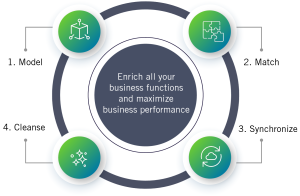Data Marts for Better Decision Making
Data Management
To manage data and make better decisions, leading companies see and control the flow of data throughout the company.
Data Marts assist leaders in managing data across systems and between business functions; as subsets of data focused on a single area for specific users, they allow businesses to obtain critical insights quickly which can be used to align departments such as finance, sales, marketing, and others.
Today’s business leaders use real data from data marts to make big and small decisions, and they match their goals to this real data.
Combining real-time data with business context data has the potential to increase productivity, decrease downtime, and improve asset usage and effectiveness. Monitoring and optimizing real-time data for what is happening now and using predictive analytics to see what will happen in the future can make a big difference in mission-critical operations.
Data Management Strategy for All Business Initiatives
Because different business initiatives have different requirements, separate functions can end up creating entire solutions unique to them. For example, the sales data needed for inventory management differs from the data required for a marketing project. In order to meet these needs, the organization creates two independent sales data feeds to different databases and applications, as well as all the necessary data modeling, data quality checks, technical infrastructure, and so on.
In the absence of a data management plan and strategy, the following results occur:
- Increased expenses
- Ineffective capacity to evaluate data across systems.
- Slow data delivery
- Increased complexity
Management of Master Data
Streamline corporate and customer data to manage massive data volumes properly.

Consider past business initiatives that were completed independently and reflect on how this resulted in different data and why this matters from a business standpoint. Take note of the actual issues that have arisen.
- How many separate processes have been developed to acquire the same data from the same sources and deliver it in slightly different formats to different targets?
- How long did these projects take to complete?
- What did they cost?
- What if these projects had planned to share data?
- How much money could have been saved?
Resolving the problem of disparate data, which has plagued so many businesses, continues to be top of mind. Using data marts can resolve some of these data challenges. Keep an eye out for future insights where we will discuss data hubs vs. data marts to mitigate data risks and discrepancies.
